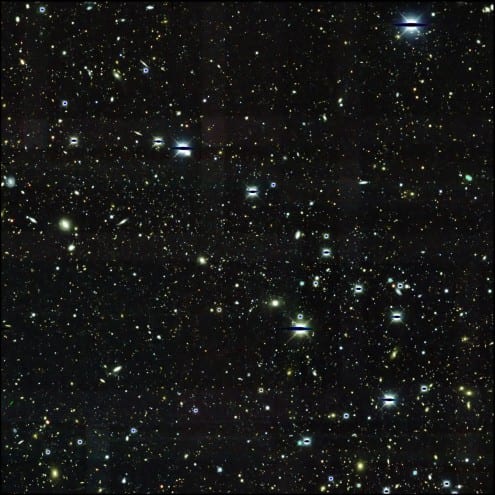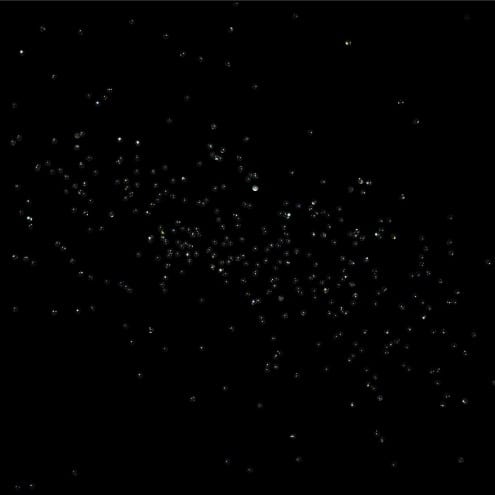Hiding in plain sight
By Oli Usher, on 12 March 2015
UCL has played a key role in the development of the Dark Energy Survey’s instrumentation, including building a series of lenses that form a crucial component of the Dark Energy Camera. UCL’s Ofer Lahav also serves as co-chair of the Dark Energy Survey science committee.
The Dark Energy Survey team published a new result this week that shows the power of the instrument.
The Milky Way is surrounded by a few dozen dwarf galaxies. Some of these are easy to spot, like the Large Magellanic Cloud, which is visible even to the naked eye as a pale blob in the Southern Hemisphere’s sky, clearly separate from the Milky Way.
Others are much harder to spot, as it is virtually impossible to distinguish their stars from the ones in the foreground, which are part of the Milky Way. Now, the Dark Energy Survey has discovered what appears to be several more. This image shows the challenge in identifying them:
The image shows one of the candidate galaxies, known as DES J0335.6-5403. It sits around 100,000 light years from Earth, and has very few stars, only around 300 could be detected, compared to an estimated 200 billion stars in the Milky Way.
The team were, however, able to analyse the image and mask all the stars that belong to our Milky Way. And when you do that, the dwarf galaxy suddenly jumps out at us:
Although UCL’s involvement in this study was only minor, it shows the power of the instrument and its contribution to the science over the past decade.
- Full details of the research can be found in a news story on the Fermilab website.
 Close
Close




